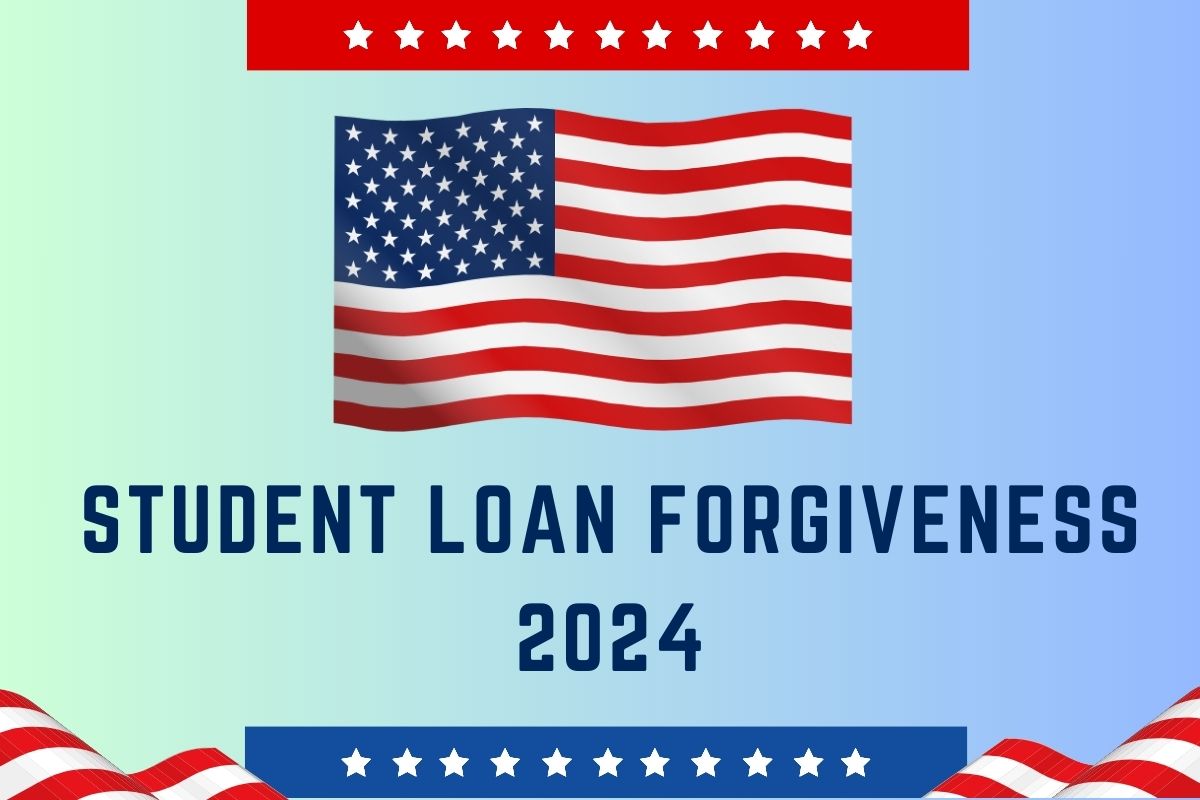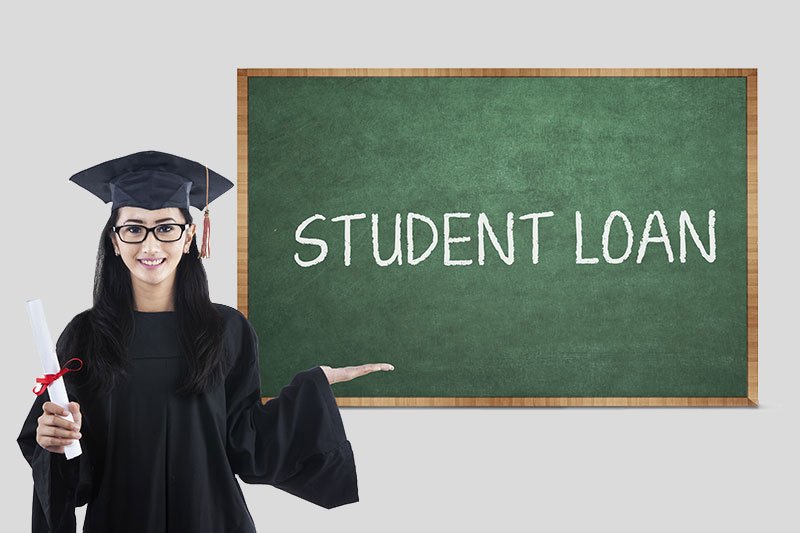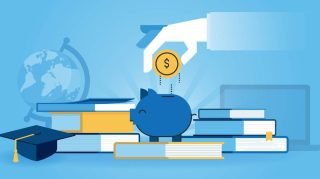Complete Guide for Student Loan in 2024
With college tuition and fees rising faster than inflation, students are borrowing more than ever to finance their education. As we enter 2024, the student debt situation shows no signs of improving. In this article, we will provide a comprehensive overview of the current state of student loans in America and what borrowers can expect in the coming years.
Navigating the world of student loans can feel overwhelming, especially with changes and updates happening frequently. This guide offers a comprehensive overview of student loans in 2024, empowering you to make informed decisions about your education investment.
In an era of rising tuition costs, student loans play a crucial role in financing higher education. While they unlock opportunities, it’s essential to understand the implications and manage debt responsibly. This guide outlines key aspects of student loans in 2024, including recent updates, different types, eligibility, repayment options, and valuable resources. Complete Guide for Student Loan in 2024.

Types of Student Loans:
- Federal Loans: Backed by the government, offering more flexible repayment options and potential forgiveness programs.
- Subsidized: Interest accrues only during grace periods and deferment.
- Unsubsidized: Interest accrues from disbursement, even during deferment.
- Direct Loans: Issued directly by the Department of Education.
- Perkins Loans: Have low interest rates for students with exceptional financial need (limited availability).
- Private Loans: Issued by banks and credit unions, often with higher interest rates and fewer borrower protections.
Key Loan Terms: (Complete Guide for Student Loan in 2024)
- Interest Rates: The fee charged for borrowing, varying based on loan type, creditworthiness, and market conditions.
- Repayment Plans: Structured ways to repay the loan, with different terms and minimum payments.
- Grace Periods: Temporary periods after graduation or enrollment status change before repayment begins.
- Deferment: Periods when repayment can be temporarily paused due to specific circumstances.
- Loan Forgiveness: Programs that discharge all or part of the loan balance under specific criteria.
Eligibility and Application Process:
Eligibility:
- Varies based on loan type, citizenship, academic progress, and financial need.
- Federal loans generally have fewer restrictions than private loans.
Application Process:
- Complete the Free Application for Federal Student Aid (FAFSA) to determine eligibility for federal aid.
- Research and compare private loan options if needed.
- Submit loan applications and provide required documentation.
Borrowing Wisely and Managing Debt:
Responsible Borrowing:
- Only borrow what you need and understand repayment obligations.
- Consider future earning potential and career options.
- Explore scholarships, grants, and work-study opportunities to minimize debt.
Debt Management Tips:
- Create a budget to track income and expenses.
- Make on-time payments to avoid late fees and damage to credit score.
- Consider income-driven repayment plans if needed.
- Explore loan consolidation options to simplify repayment.
Repayment Options and Resources:
Repayment Plans:
- Standard Repayment: Fixed monthly payments over 10 years.
- Graduated Repayment: Payments start low and gradually increase.
- Income-Driven Repayment (IDR): Payments based on income and family size.
- Pay As You Earn (PAYE): One of the most popular IDR plans.
Resources:
- Federal Student Aid website: https://studentaid.gov/
- Consumer Financial Protection Bureau (CFPB): https://www.consumerfinance.gov/
- National Foundation for Credit Counseling (NFCC): https://www.nfcc.org/
Additional Considerations:
Scams and Predatory Lending:
- Be wary of lenders offering quick or easy loans with hidden fees or high interest rates.
- Verify lender legitimacy before applying.
- Never provide personal information to unsolicited sources.
Future Changes:
- Stay informed about potential changes to student loan programs that could impact borrowers.
- Regularly monitor government and loan servicer websites for updates.
Hardship and Delinquency:
- If facing financial hardship, contact your loan servicer to discuss options.
- Defaulting on loans can have severe consequences, so seeking help early is crucial.
Current State of Student Loans
As of 2024, the average student loan debt for graduates is over $30,000. This is a significant burden, considering that the median annual income for 25-34 year olds with a bachelor’s degree is around $51,000. Default rates on student loans remain high, with over 10% of borrowers defaulting within 3 years of entering repayment. The COVID-19 pandemic has exacerbated repayment challenges, with many borrowers seeking relief through deferred payments, forbearance and extended grace periods. Complete Guide for Student Loan in 2024.

With rising costs and stagnant wages, paying off student loans has become very difficult for many. Even with income-driven repayment plans, borrowers struggle to make payments while also affording necessities like housing, healthcare and childcare. Student loan debt is delaying millennials from major life milestones like getting married, having children and owning a home. It has become a major social and economic issue. Complete Guide for Student Loan in 2024.
Proposed Solutions
In the 2024 presidential election, student debt forgiveness has become a major platform issue. Progressive democratic candidates are proposing plans for broad student loan forgiveness, arguing it will stimulate the economy and provide relief to middle and low-income borrowers. Some plans call for canceling up to $50,000 for all federal student loan borrowers.
Republican and moderate democratic candidates oppose such sweeping proposals on fiscal and philosophical grounds. Instead, they support more modest reforms like simplifying income-driven repayment plans, allowing employers to contribute to payments, and refinancing options. There is debate around making public college tuition free, which progressives favor but others oppose for its costs.
Potential legislation includes allowing student loans to be discharged in bankruptcy, requiring colleges to shoulder some financial responsibility for defaulted loans, and expanding Pell grants. Bipartisan efforts to improve the Public Service Loan Forgiveness program are also underway. Absent major legislative action, the federal government will continue relied on executive action for relief. Complete Guide for Student Loan in 2024.
The Student Loan Environment in 2024
Given the fractious political environment, it is unlikely that major student debt cancellation will occur before the 2024 election. Likely, there will be modest executive actions like extending the payment pause, approving more forgiveness under IDR plans, and targeting cancellation for specific borrower groups. The Biden administration will face pressure from progressive Democrats to be aggressive on forgiveness using executive authority.
As no major legislation is expected, borrowers will continue struggling under the weight of monthly payments, interest accrual and rigid repayment rules. Default rates are projected to rise once payments restart in 2024. With balances growing, the cycle of borrowers deferring payments but not making progress on debt will persist. Calls for systemic reforms like bankruptcy discharge rules and college accountability will intensify.
Private student loan issuers will benefit from high demand for refinancing options from federal borrowers looking to lower costs. Fintech lenders like SoFi will thrive in the refinance market. Competition and segmentation will increase in the private loan space. More employers may offer student loan contributions as an incentive for recruitment and retention. Complete Guide for Student Loan in 2024.
Overall, fundamental change is unlikely in the absence of major legislation. Borrowers will remain under pressure from rising balances and strained finances. Calls for debt cancellation, college accountability and flexible rules will reach fever pitch. But partisanship will prevent comprehensive reform before the election. Small-scale executive action and private market segmentation will be the status quo for federal and private loans respectively. Complete Guide for Student Loan in 2024.
Best Practices for Student Loan Borrowers
Until major reform arrives, student borrowers should research options to ease the burden of monthly payments. Looking into income-driven repayment plans can potentially lower payments. Refinancing with a private lender may get a lower interest rate. Payment pause extensions provide temporary relief, but interest continues accruing. Consolidating loans or targeting payments to high-interest debt can accelerate payoff.
Borrowers can research employer repayment assistance programs or public service loan forgiveness. Seeking guidance from a financial advisor and being proactive with loan servicers can help optimize the repayment path. Further education like certifications can boost earning potential and affordability. With no silver bullet available, borrowers need to explore multiple options for managing student debt until broader reform is enacted.
The Road Ahead
Student debt is likely to remain a defining political and economic issue through the 2020s. With a polarized climate, major changes face legislative hurdles for the foreseeable future. Creative executive actions and private sector solutions may provide some relief, but systemic reform remains years away. The student debt crisis will likely worsen before it improves. Complete Guide for Student Loan in 2024.
For individual borrowers, the road ahead will be filled with challenges. But being proactive about exploring relief programs, alternative repayment plans and other options can help lighten the burden. With prudence and perseverance, it is possible to pay off loans even in today’s challenging environment. But for society, the journey to freedom from student debt will be long and arduous. Complete Guide for Student Loan in 2024.
Strategies for Managing Student Loan Debt
With sweeping reforms unlikely in the near future, it is imperative for student loan borrowers to take control of their debt through smart financial planning and utilization of relief programs. Here are some effective strategies for managing student loans:
Refinancing and Consolidation
Refinancing student loans to a lower interest rate can substantially reduce interest costs over the life of the loan. Online lenders like Earnest, SoFi and CommonBond offer competitive rates based on creditworthiness. Federal borrowers should weigh pros and cons, as refinancing means losing federal protections. Consolidating through Direct Consolidation can combine multiple federal loans into one, averaging interest rates. This streamlines payments into one monthly bill. Complete Guide for Student Loan in 2024.
Income-Driven Repayment Plans
IDR plans like REPAYE and PAYE base monthly payments on income and family size. Payment amounts are recalculated each year. Interest continues accruing, but remaining balances are forgiven after 20-25 years. IDR plans provide an affordable payment option, but they increase total interest costs over the life of the loan. Complete Guide for Student Loan in 2024.
Deferments and Forbearance
Deferring payments or seeking forbearance provides temporary relief when facing financial hardship. However, interest continues accruing, leading to balance growth. Deferment and forbearance should be used sparingly and strategically. Setting up auto-debit for income-driven payments helps avoid need for deferment.
Paying Down Highest Interest Rates
Making extra payments towards high interest rate loans accelerates payoff. The avalanche method prioritizes highest interest rate debt first. The debt snowball method targets smallest balance loans first. Excel spreadsheet tools help optimize and target additional payments strategically to save on interest. Complete Guide for Student Loan in 2024.
Tax Deductions
Student loan interest can be deducted on federal income taxes, up to $2,500 annually. This provides a small amount of savings. Scores of other education-related deductions and credits exist. Consultation with a tax professional can identify all eligible education tax benefits.
Employer Assistance Programs
A growing number of employers now offer student loan repayment assistance as an employee benefit. Typically several hundred dollars per month go towards student loans, reducing principal and interest. Researching companies offering this benefit can give recent graduates a competitive edge.
Public Service Loan Forgiveness
Public Service Loan Forgiveness (PSLF) forgives federal loan balances after 10 years of payments while working for an eligible employer like government or a 501(c)(3) nonprofit. Be sure to complete annual employment certifications and enroll in qualifying repayment plans. Changes to PSLF rules have made the program more accessible and generous for public service workers.
Pursuing Loan Discharges
In limited cases, federal student loans may qualify to be discharged due to school closure, permanent disability, false loan certification or unpaid refunds. Borrower defense and false certification discharge requests are also possible in cases of fraud. The process is complex, but loan discharge can eliminate loan balances entirely in approved situations.
Alternative Repayment Strategies
Some borrowers employ aggressive strategies like making bi-weekly half payments rather than full monthly payments. This results in an extra month’s payment per year, accelerating payoff. Recasting the loan and resetting the amortization after making extra lump sum payments can drop monthly amounts and interest costs.
Leveraging Employer Education Assistance
Many employers offer tuition reimbursement or repayment benefits. Seeking out and maximizing these workplace education benefits can reduce loan borrowing. Contributing to a 529 college savings plan provides tax benefits while saving for education expenses. Education saving and assistance programs provide “free money” towards degrees. Complete Guide for Student Loan in 2024.
The ideal approach utilizes multiple options like income-driven repayment, targeted extra payments, refinancing savings, and tax benefits to tackle debt at speed and efficiency. With flexibility limited at the federal policy level, creating a personalized repayment strategy allows borrowers to take control of their student debt. The road ahead will require endurance, but smart planning and discipline can make the journey manageable. There is light at the end of the tunnel. Complete Guide for Student Loan in 2024.
Conclusion
Student loans present a major challenge for both individual borrowers and the nation as a whole. With no quick fixes available, people will have to navigate a complex loan environment using elbow grease and creativity. There is hope that the crisis may eventually prompt major reform. But the road ahead will be difficult, requiring societal change to match individual effort. With proactivity and prudence, borrowers can achieve freedom from debt. But it will require endurance and effort to manage student loans until impactful policy reform is enacted. Complete Guide for Student Loan in 2024.
Understanding student loans empowers you to make informed decisions about financing your education. By carefully considering your options, managing debt responsibly, and utilizing available resources, you can navigate this journey successfully and achieve your educational goals. Complete Guide for Student Loan in 2024.









